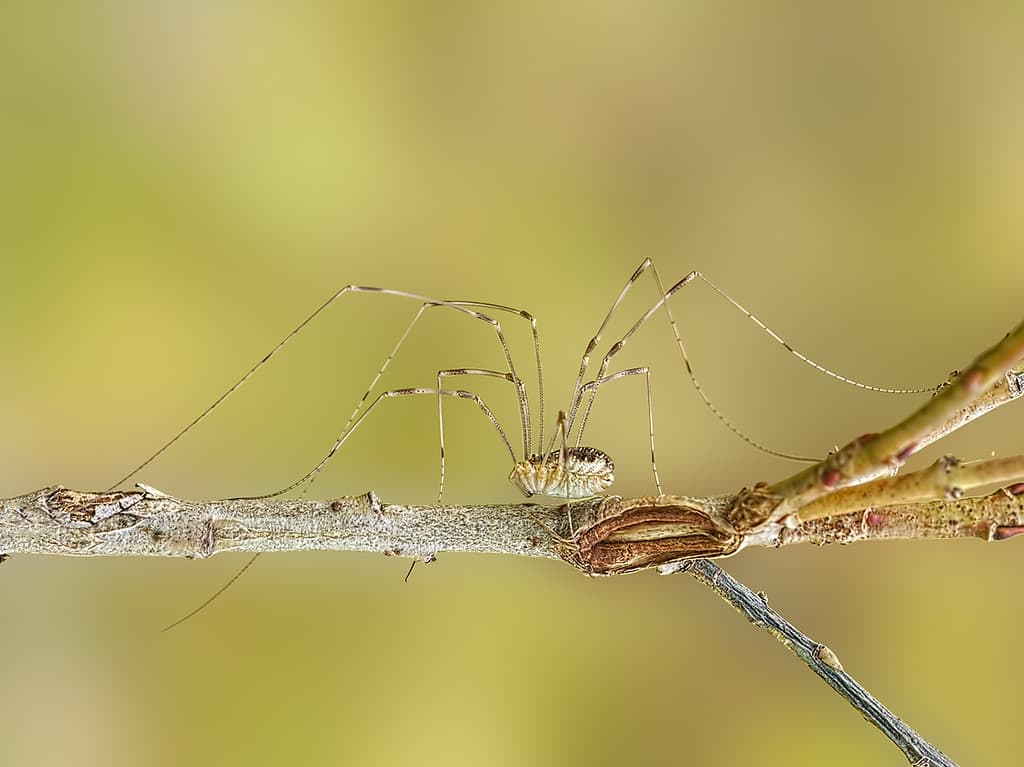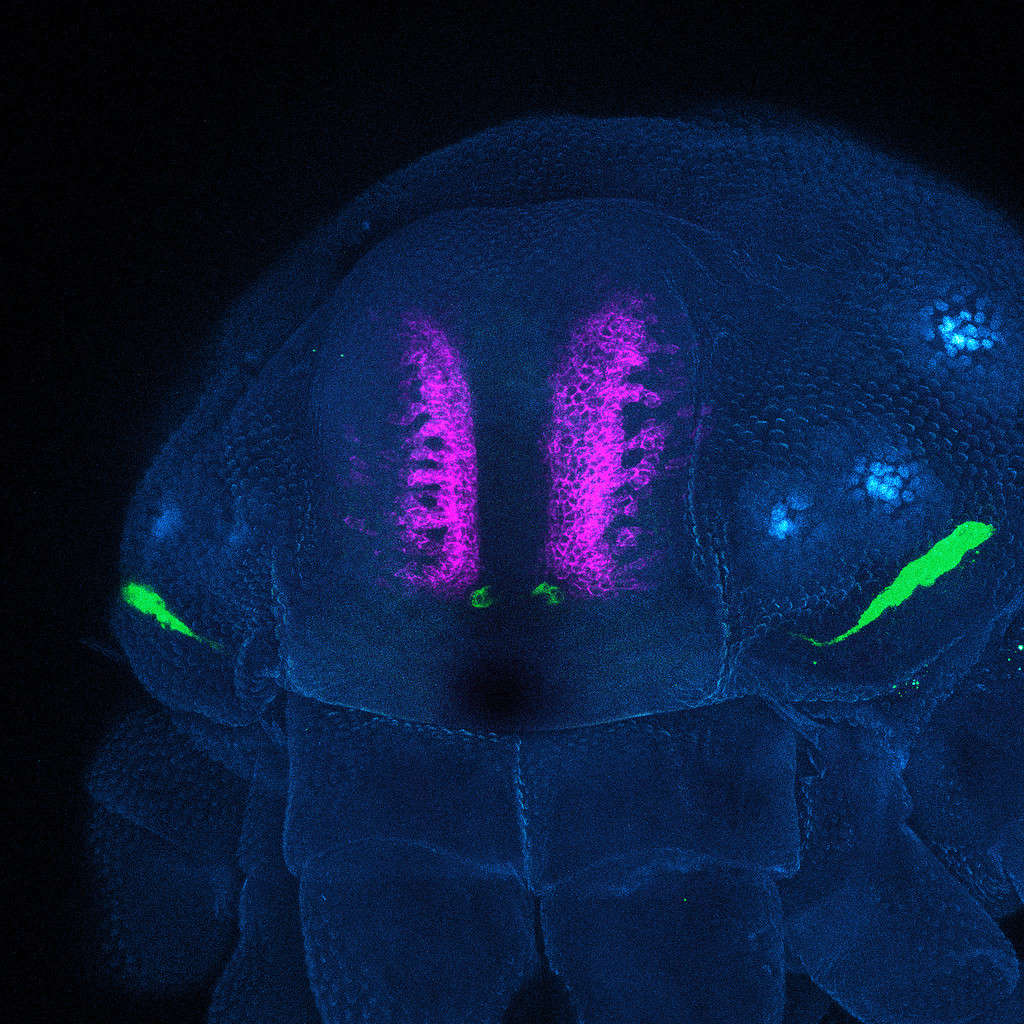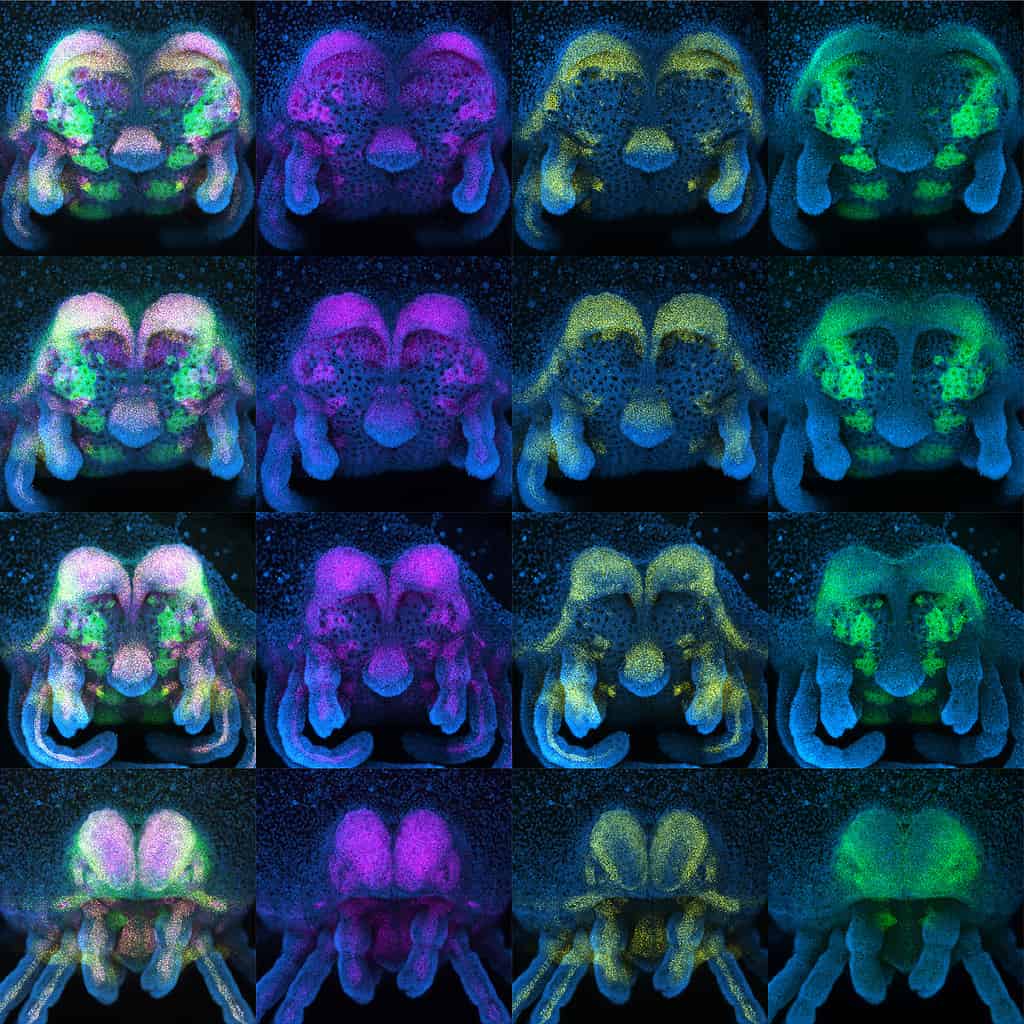
Daddy longlegs are arachnids, but they’re not spiders, although they’re often mistaken for them due to their similar appearance. Also called harvestmen, daddy longlegs are actually members of the order Opiliones. This order evolved over 400 million years ago, way before the time of the dinosaurs — making them one of the oldest known groups of arachnids in existence. Their long history has allowed them to diversify into over 6,600 species, with adaptations that enable them to thrive in a wide range of environmental conditions.
But there’s much we still don’t know about their evolutionary history.
Take their eyes, for instance. Daddy longlegs typically have two median eyes located on the front of the body — for comparison, spiders typically have eight eyes (though not always). But Guilherme Gainett and Prashant Sharma from the University of Wisconsin-Madison found that daddy longlegs have two more pairs of eyes — sort of.
“I couldn’t believe my eyes. It was one of those little moments that happens in science when you see something that no one has ever seen and get really excited,” recalls Gainett, who is now a post-doctoral researcher at Boston Children’s Hospital and Harvard Medical School.
The window to the soul
The researchers were analyzing daddy longlegs embryos under a microscope when they discovered opsins. Opsins are a group of light-sensitive proteins found in photoreceptor cells of the retina, playing a pivotal role in vision. These proteins undergo structural changes when they absorb light, initiating a series of biochemical reactions that ultimately convert light signals into electrical signals, which are interpreted by the brain as visual images.

Finding opsin clusters on an embryo strongly points towards the idea of vestigial eyes — rudimentary eye structures that have lost their primary function in vision due to evolutionary changes or adaptations. At some point during their evolution, the eyes would have developed into two sets of functional eyes but now, have been evolutionary eliminated.
The researchers found two sets of eyes: one lateral, on the side of the head, and another median one, in front of the eyes that currently develop as adults. These two pairs of eyes never develop into “proper” eyes but could be used by embryos to assess darkness and light, as they are still connected to the visual processing part of the brain.
These vestigial organs are crucial because they are a link between past and present biological features. For instance, in 2014, an ancient arachnid showed an additional set of eyes on the lateral side of the head. This new study suggests not one but two additional pairs of eyes in the daddy longlegs lineage. But, overall, the position and structure of these fossil eyes fit with the observed vestigial eyes.
Lateral eyes
Different eye positions offer different advantages. In general, median eyes offer the best visual acuity, but lateral eyes can help detect peripheral movement. They also don’t need as much light so they can be useful in low-light environments.

The researchers then started questioning when, why, and how daddy longlegs started losing these pairs of eyes. Well, in general eyes use up a fair bit of physical resources. So, when eyes provide less valuable information, they can be reduced and eliminated through evolution. Because daddy longlegs live in so many different conditions and environments, it’s hard to know exactly why this transition started happening.
So instead, the team looked at genetics. Specifically, they looked at the genes that direct the development of arachnid eyes.
“Some of these genes are expressed in both types of eyes, so they’re necessary for all eyes, for median eyes and lateral eyes. But some of these genes are more restricted to one type or another,” says Gainett.
They temporarily knocked down a few of these genes, to prove that the opsin structures are indeed vestigial eyes.
Now, the team is continuing work on arthropod eye evolution. Specifically, they are looking at the transition from compound eyes, like those of flies, to the camera-like eyes that we see in many spiders.
“One of the goals of studying the genetics behind what we see in morphology is really understanding how evolution happens. What do you need to change in the underlying recipe of genes for the diversity of eyes to evolve?” Gainett concludes.
The study “Vestigial organs alter fossil placements in an ancient group of terrestrial chelicerates” was published in Current Biology.









